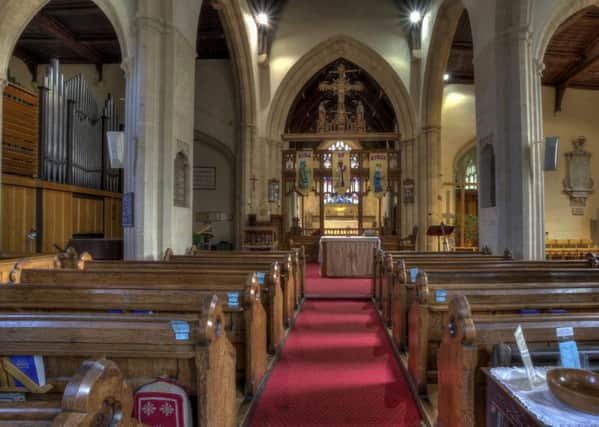Jane Anderson: Connect with spiritual peace at church


But we all know there are problems with statistics, so we need to look deeper. In the last census 38 per cent had no belief, but 28 per cent stated a belief in God and another 20 per cent said they believed in some spiritual power – together that makes 48 per cent. Only about 8 per cent attend church in Scotland.
So what about this other 40 per cent?
Certainly organised religion needs people: aren’t there committees to fill, funds to be raised, buildings to maintain, services to plan? But is this what draws the uncommitted into the church?
Advertisement
Hide AdAdvertisement
Hide AdSome churches have tried to respond to the needs of the world by setting up food banks, night shelters, street pastors. This is much needed but it is something that individuals can support rather than being the core aim of a church.
After the tables are put away from the coffee morning for the elderly, the dishes washed from the lunch group, the children collected from the holiday club, have the needs of these people really been heard and, apart from a feel good factor, are those involved nearer spiritual peace?
So many people today crave a sense of peace and silence to balance their busy, noisy lives. A connection with the natural world inspires many. A continual questioning and exploration, rather than a passive reception of orthodoxy, is a mark of our society.
In Scotland, we have an inspiration on our doorsteps in the tradition and nature of the early Celtic church of St Ninian and St Columba, with its growth and evolution over centuries.
A love of creation and the natural world shines from all the writings of the Celtic church, with the use of silence and space to explore feelings, giving time to grow into a faith rather than an instant acceptance of fixed facts.
It should not be difficult for our established churches to tap into this deep tradition, which is not a thing of the past but has changed and adapted to be still relevant today.
A church service with lots of words at a fixed time on a Sunday might not suit the commitments of many, but a building open for a busy worker to pop in at lunch time or a jogging fitness fanatic in the evening, can give the peace and silence craved by many.
An evening walk under the stars with a hooting owl as the only commentary might inspire as much as Lent group. Recognition that your neighbour is finding it hard to cope and joining them for a cuppa is as much a support as asking them to church.
Advertisement
Hide AdAdvertisement
Hide AdYou never know, they might be there to celebrate Easter next year, or at least be a contented person: a true resurrection.
Jane Anderson is a member of St Mary’s Episcopal Church, Birnam, Perthshire.